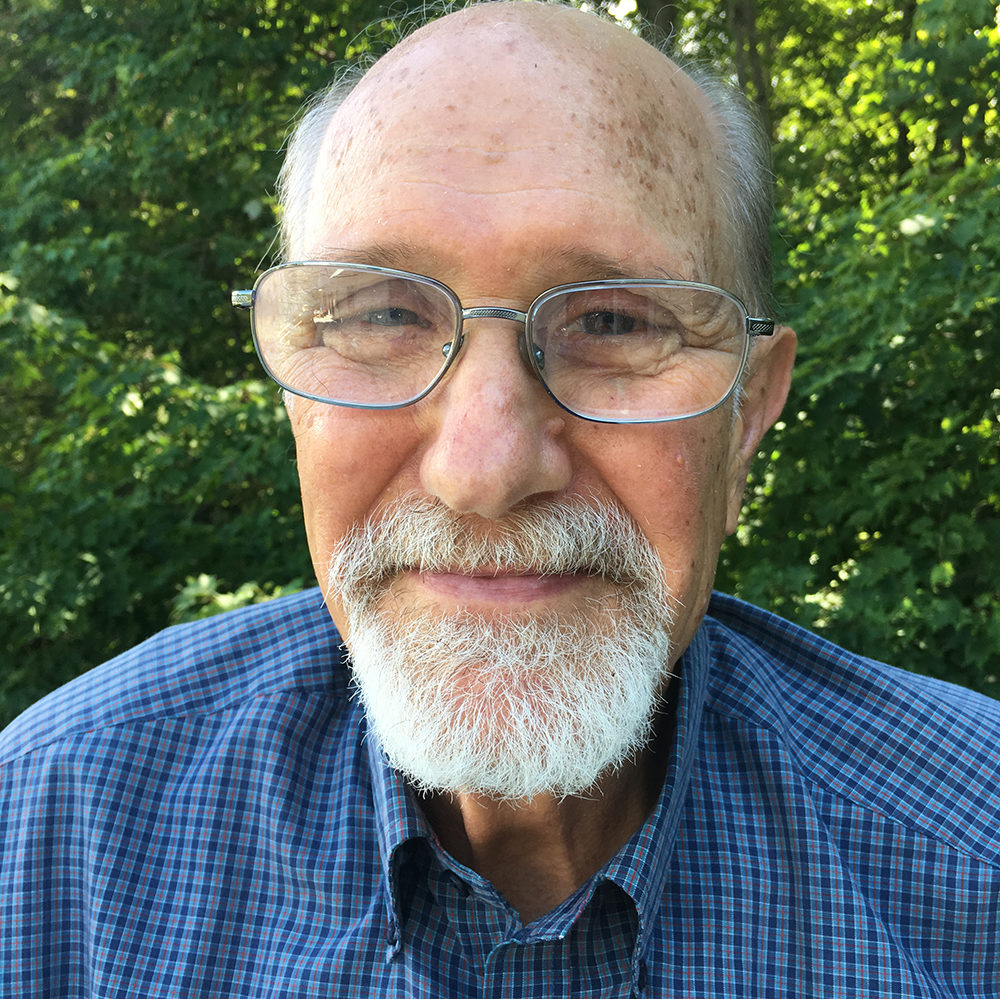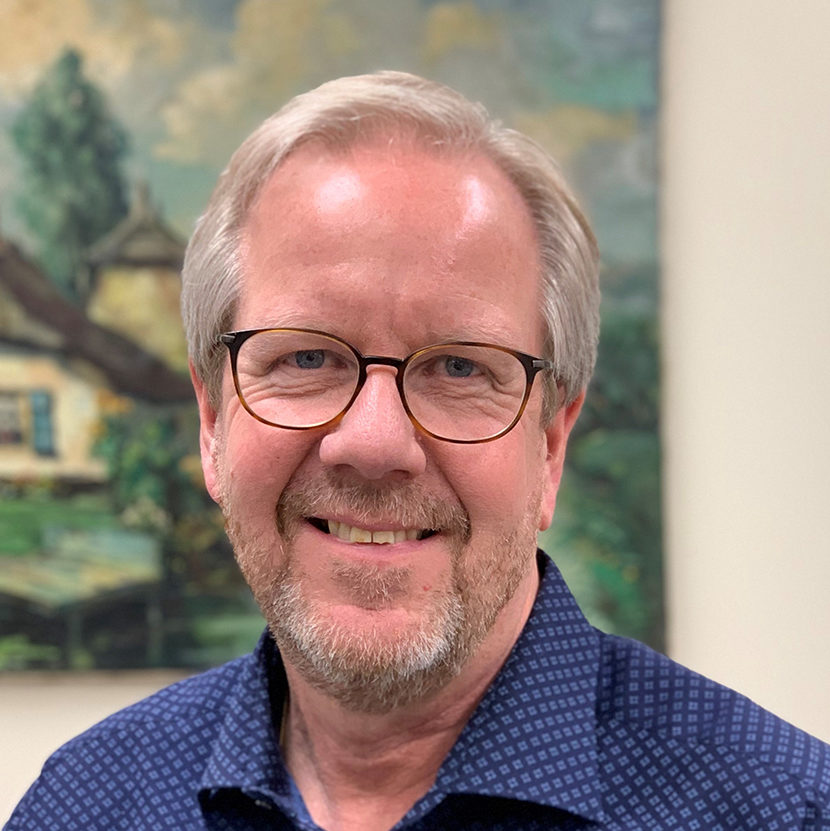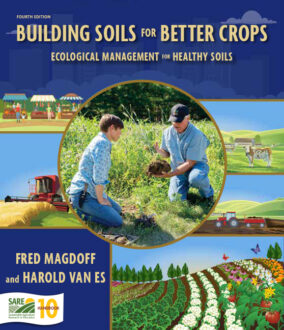Used to be anybody could farm. All you needed was a strong back ... but nowadays you need a good education to understand all the advice you get so you can pick out what’ll do you the least harm.
—Vermont saying, mid-1900s
We have written this book with farmers, farm advisors, students and gardeners in mind, although we have also found copies of earlier editions on the bookshelves of many of our colleagues in science. Building Soils for Better Crops is a practical guide to ecological soil management that provides background information as well as details of soil-improving practices. This book is meant to give the reader a holistic appreciation of the importance of soil health and to suggest ecologically sound practices that help to develop and maintain healthy soils.
Building Soils for Better Crops has evolved over time. The first edition focused exclusively on the management of soil organic matter. It is the central component of healthy soils, and if you follow practices that build and maintain good levels of soil organic matter, you will find it easier to grow healthy and high-yielding crops. Plants can better withstand droughty conditions and won’t be as bothered by insects and diseases. By maintaining adequate levels of organic matter in soil, you have less reason to use as much commercial fertilizer, lime and pesticides as many farmers now purchase. Soil organic matter is that important. The second edition expanded the scope to other aspects of soil management and became recognized as a highly influential book that inspired many towards holistic soil health management.
The third edition was rewritten, expanded with new chapters, and had broader geographical scope; it evolved into a more comprehensive treatise of sustainable soil management for a global audience. Since its publication in 2009, the understanding and promotion of soil health and more holistic approaches to managing crops and soils has truly taken off. We now have numerous major soil health initiatives by governments and NGOs in the United States and around the world.
The fourth edition provides critical updates to reflect the new science and many new exciting developments in soil health. It still has a primary perspective on farming and soils in the United States, but we further expanded the global scope and included a new chapter on growing plants in urban environments.
A book like this one cannot give exact answers to problems on specific farms. In fact, we purposely stay away from prescriptive approaches. There are just too many differences from one field to another, one farm to another, and one region to another, to warrant blanket recommendations. To make specific suggestions, it is necessary to know the details of the soil, crop, climate, machinery, human considerations and other variable factors. Good soil management is knowledge intensive and needs to be adaptive. It is better achieved through education and understanding than with simple recommendations.
Over many millennia, people have struggled with the same issues of maintaining soil productivity as we struggle with today. We quote some of these people in many of the epigraphs at the beginning of each chapter in appreciation for those who have come before. Vermont Agricultural Experiment Station Bulletin No. 135, published in 1908, is especially fascinating; it contains an article by three scientists about the importance of soil organic matter that is strikingly modern in many ways. The message of Edward Faulkner’s Plowman’s Folly—that reduced tillage and increased use of organic residues are essential to improving soil—is as valid today as it was in 1943 when it was first published. And let’s not forget the first textbook of soil management, Jethro Tull’s A Horse-Hoeing Husbandry, or an Essay on the Principles of Tillage and Vegetation, first published in 1731. Although it discusses now-refuted concepts, like the need for intensive tillage, it also contains the blueprints for modern seed drills and crop rotations. The saying is right: what goes around comes around. Sources are cited at the end of each chapter and at the end of the book, although what’s provided is not a comprehensive list of references on the subject.
Many people reviewed individual chapters for this edition or the entire manuscript at one stage or another and made very useful suggestions. We would like to thank Anthony Bly, Tom Bruulsema, Dennis Chessman, Doug Collins, Willie Durham, Alan Franzluebbers, Julia Gaskin, Vern Grubinger, Joel Gruver, Ganga Hettiarachchi, Jim Hoorman, Tom Jensen, Zahangir Kabir, Doug Karlen, Carl Koch, Peter Kyveryga, Doug Landblom, Matt Leibman, Kate MacFarland, Teresa Matteson, Tai McClellan Maaz, Justin Morris, Rob Myers, Doug Peterson, Heidi Peterson, Sarah Pethybridge, Steve Phillips, Matt Ryan, Paul Salon, Brandon Smith, John Spargo, Diane Stott, Candy Thomas, Sharon Weyers, Charlie White and Marlon Winger.
We recognize colleagues who provided photos in the figure captions, and we are grateful for their contributions. All other photos are our own or are in the public domain. We also acknowledge some of our colleagues—Bob Schindelbeck, Joseph Amsili, Jean Bonhotal, George Abawi, David Wolfe, Omololu (John) Idowu, Bianca and Dan Moebius-Clune, Ray Weil, Nina Bassuk, and Rich Bartlett (deceased)—as well as many of our former students and postdocs, who have made contributions or whose ideas, insights and research have helped shape our understanding of the subject. And we thank our wives, Amy Demarest and Cindy van Es, for their patience and encouragement during the writing of this book. Any mistakes are, of course, ours alone.
A final note about units of measure. Agricultural practitioners are notorious for using different units around the world, like bushels, quintals, hectares, acres, manzanas, and imperial or metric tons. This book has an expanding global audience, and many readers outside North America, and scientists like us, would perhaps prefer the use of metric units. But we decided to maintain the use of imperial units in the book for the convenience of our original target audience. We trust that it does not excessively distract from your reading experience and that readers will make the conversions when the numbers really matter.
Fred Magdoff, University of Vermont
Harold van Es, Cornell University
August 2020
About the Authors

Fred Magdoff is emeritus professor of plant and soil science at the University of Vermont. He was Plant and Soil Science Department chair for eight years and for two decades was the coordinator of the 12-state Northeast Region for the U.S. Department of Agriculture’s Sustainable Agriculture Research and Education (SARE) program. He is also a fellow of the American Society of Agronomy and the 2016 recipient of the Presidential Award of the Soil Science Society of America “for outstanding influence on soil science and enduring impact on the future of our science and profession.” He has worked on soil testing for nitrogen and phosphorus, the effects of manures on soil properties and crop yields, buffering of soil pH, and many other issues related to soil health. He lives in Burlington and Fletcher, Vt., with his wife, two dogs, a large garden, an occasional flock of chickens and a small herd of beef cows.

Harold van Es is professor of soil science at Cornell University and served as chair of the Department of Crop and Soil Sciences. Born in Amsterdam, Netherlands, he moved to the United States for graduate studies and eventually a life and career in science. His current research, teaching and Extension efforts focus on soil health, digital agriculture and environmental statistics. He co-developed the widely used CASH soil health test and was the lead inventor of the Adapt-N technology, which was successfully commercialized and received the $1 million prize for the Tulane Nitrogen Reduction Challenge. He was the 2016 president of the Soil Science Society of America and is also a fellow of that society, as well as a fellow of the American Society of Agronomy. He and his wife live in Lansing, N.Y., where they raised three children.
